Strongman vs powerlifting: Key Differences Explained
Author:
Unlock your full potential by engaging with our experts and community! Have questions about your fitness journey or looking for expert advice on weightlifting techniques? Don’t hesitate — leave a comment below and Sergiy Osipchyk will provide a personalized answer and insights to help you reach your goals.
Torokhtiy is reader-supported. Some links are affiliate links, and we may earn a commission at no extra cost to you. See our disclosure page for details.
Deciding the best option between strongman and powerlifting? Whether building the strength foundation of the squat, bench press, and deadlift, or developing overall power and stamina by lifting, pushing, carrying, and pulling heavy objects? Here’s a detailed analysis of two strength sports for you to define a perfect one.
Deciding the best option between strongman and powerlifting? – Whether building the strength foundation of the squat, bench press, and deadlift, or developing overall power and stamina by lifting, pushing, carrying, and pulling heavy objects? Here’s a detailed analysis of two strength sports for you to define a perfect one.
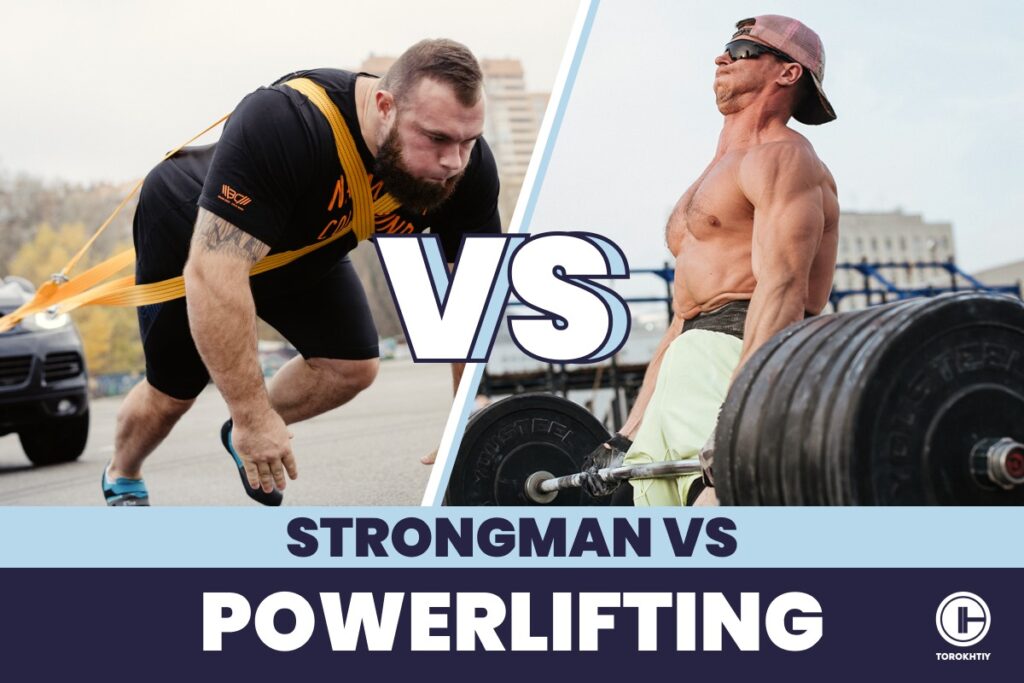
Strongman Competition: What Is It, Its Major Characteristics?
Strongman competition is a brutal combination of strength, resistance, and will. This strength-specific event involves moving heavy objects within a maximum short period, or for a maximum distance as it’s possible in a limited amount of time.
Although, this is not just a strength contest, it’s a great test of speed, mental and physical stamina, and fortitude.
Many suppose Strongman is just lifting extreme weights, but actually this competition type looks more like cross-training, than it does powerlifting. It includes a vast majority of events that require athleticism and ultimate strength.
4 Main Exercises and Competitions in Strongman
Strongman movements differ from traditional strength training as it focuses on functional strength mostly. Functional strength means that you have to be strong in a wide range of movements, not just in lifts.
Strongman training often includes lifting, carrying, pushing, pulling, and bearing heavy, irregularly shaped items for maximal distances, heights, and within the defined time. Such exercises aim to challenge the whole body, including muscle fibers and the cardiovascular system.
Here’s the list of the main strongman exercises you can try to perform:
1. Atlas Stone Lifts
For some athletes this exercise may seem intimidating, however, it can promote basic strength and improve lifting technique. During this exercise, you’ll be able to involve your erectors, lats, pecs, and biceps.
2. Vehicle/Sled Push
Pushing a vehicle for a specific distance works the legs and the cardio system well. You can replicate this exercise in the gym using a sled.
This is a great alternative, as you can load it with different weights, depending on whether you want to go very heavy, or lighter for longer distances. The sled push is also highly effective for overall cardiovascular health.
3. Kettlebell Swing
This exercise involves the muscles of the lower back and hips to ensure powerful hip extension movements. Since hips bring the force to throw kegs over high bars or load stones onto high platforms during strongman competitions.
The muscles of the posterior hip, i.e., glutes and hamstrings drive the weight while the kettlebell swing itself stabilizes the upper back and core.
4. Tyre Flips
This compound movement simultaneously engages large muscular groups, including the quadriceps, hamstrings, glutes, calves, chest, biceps, and abdominals. For just one movement you engage the whole body. This exercise is similar to a deadlift or a clean in terms of the required movement skills.
What about the major and the most popular strongman events, they’re divided into world and continental championship contests, Grand Prix and international contests, national championships, and AFSA events. Here’s the list of the world-level well-known competitions:
- the World’s Strongest Man
- the Europe’s Strongest Man
- the Arnold Strongman Classic
- Giants Live tour
- Strongman Champions League
- the World’s Ultimate Strongman
- the Rogue Invitational.
Additionally, the Strongman competition has 5 major types of lifts:
- Deadlift, namely axle bar deadlift, silver dollar deadlift (18”), tire deadlift
- Overhead press including log, yoke, and axle overhead press
- Carrying objects, e.g., farmer’s carry, stone, sandbag carry
- Loading objects like a stone load to the platform, or sandbag over the bar
- Pulling, pushing objects like truck pulling.
Follow us!

Free!
Get a 2-week Weightlifting Program as a bonus for the subscription to kickstart your training plan!

Free!
Training Routine and Conditions & Specific Equipment
If you have a solid background in strength training under your belt, you can take up the Strongman training program.
Strongmen include different types of training depending on the athletes’ competition cycle. For instance, in the off-season, the workout will look similar to bodybuilding and powerlifting. The goal is to gain muscles and facilitate lifting strength.
During the competition season, training will be more technical, and focused on the proper performance of exercises. Events like yoke and farmer’s walk will develop strongman-specific grip strength and core stability.
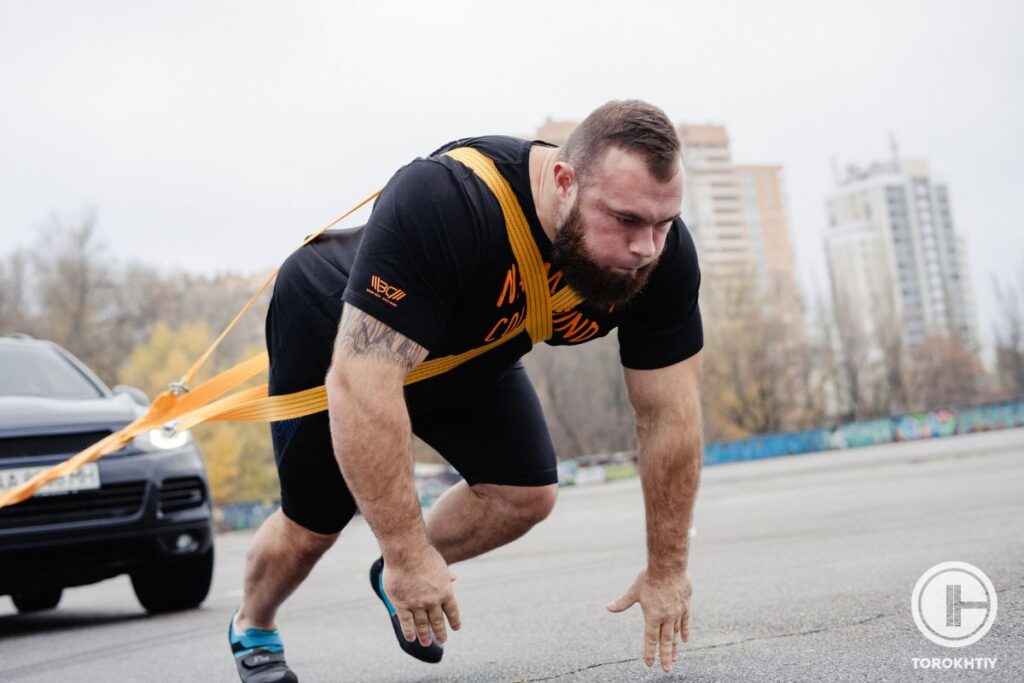
Conditioning workouts can also be included to get fitter for the competitions. This may include sprints, carries, and plyometric training.
Training for Strongman competition can include grip strength exercises, pulling movements for getting massive back, i.e., rowing, pull-ups, ropework, T-Bar rows; and overhead press (floor presses and the close-grip bench press).
Zercher squats are a great exercise to include in your workout as it mimics loading events. A cardio workout is also an irreplaceable option as it can improve aerobic abilities for quicker recovery in between events.
Concerning the equipment, strongman training requires a barbell, weight plates, axle/ log/ Swiss/ hex bars, sandbags, dumbbells, kettlebells, lifting accessories like wrist wraps, lifting belts, farmer’s walk handles, etc.
Raw powerlifting has similar equipment rules to Strongman: sleeves, wraps, and belts are permitted. However, the Strongman gets an extra accessory for deadlifting and is allowed to use straps. Equipped powerlifters use specific suits that act as stiff springs allowing them to lift heavier weights than when raw.
Powerlifting Events: What Is It, Its Key Characteristics and Goals?
Powerlifting is a strength sport that includes squats, bench press, and deadlift to assess an athlete’s strength and technical skills in each lift. The sport is scored using what is referred to as a total, while nine lifts will be performed, with three attempts for each lift.
While squatting, an athlete should squat to a point where the hip crease is lower than the top of the knee. For performing a bench press, an athlete pauses the weight on the chest, then locks the weight out before placing the bar back in the rack.
In the deadlift session, the athlete should lift the weight to lockout, then lower the barbell back to the ground controlling the movement.
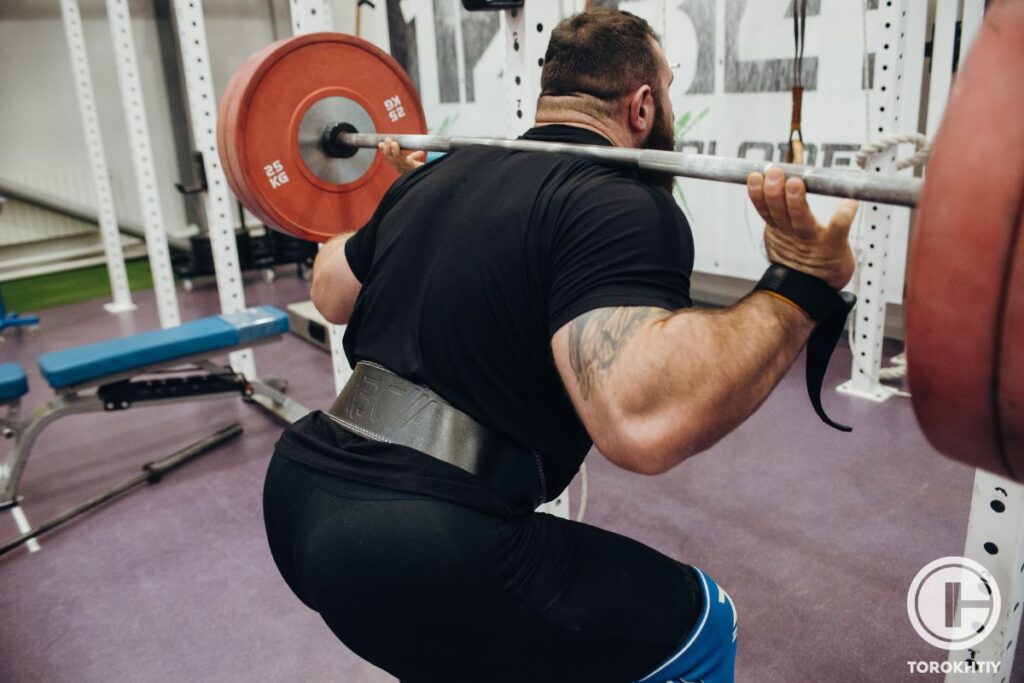
3 Conventional Exercises Overview: Squat, Bench Press, Deadlift
Big compound movements such as deadlifts, squats, and presses are helpful in building the overall strength for lifting heavy objects.
To develop a proper muscle mass, accessory exercises such as dumbbell shoulder press, dumbbell chest press, tricep extension, bicep curl, leg extension, leg curl, dumbbell row and core exercises can be included in the training regime.
1. Deadlift
When it comes to lifting objects off the ground, the barbell deadlift is used widely to develop grip and core strength, and overall athletics. This exercise works the entire body, especially the posterior chain, including the glutes, hamstrings, and lower back. The deadlift is a powerful exercise for increasing overall endurance.
2. Squat
The barbell squat is the first lift performed during a powerlifting competition. When using a squat rack, the goal is to take as few steps as necessary during the walkout to retain as much energy as possible to perform a lift. When using a monolift, an athlete should make a solid brace and stand up properly with the barbell.
3. Bench Press
This is the second lift during a powerlifting competition. In competition, a bench press is legal when the barbell is lowered, controlled, paused on the chest, and then pressed to lockout before placing it back into the rack.
The bench press is one of the most technically demanding exercises, and many athletes struggle to master the lift.
Competition Rules and Approaches to Training in Powerlifting
Powerlifting competition includes three movements, aiming to lift the maximum amount of weight for one repetition. However, not just the weight is important: while competing, an athlete should follow the specific guidelines and preserve the lifting form.
So, a powerlifting program sticks to the proper lifting techniques for the squat, deadlift, and bench press.
Using proper form, each athlete has three attempts for each exercise to lift as much weight as possible for one repetition. Also, all contenders are divided into categories based on their age, gender, and body weight. The winner of a category became a lifter with the highest total weight, i.e., the sum of the best of each of three lifts.
The standards, rules, and judging may vary between federations. Concerning the equipment, it’s possible to use barbells, weights (discs), collars, wrist wraps, straps, etc. Generally, all equipment has specific guidelines that must be met.
All three lifts are performed on a raised square platform, no more than 10 cm off the ground. It must be non-slip and measure somewhere between 2.5 m to 4 m on each side.
Strongman vs Powerlifting: Differences of Two Areas of Strength Sports
When comparing strongman vs powerlifting, there are several obvious distinct features, which characterize these two disciplines making them unique. Let’s observe some of them:
1. Number of Events
Powerlifting consists of three events: squat, bench, and deadlift. A strongman competition has 5 total events. Most commonly, you’ll begin with an overhead event. Secondly, there will be a deadlift event. Followed by 2 moving events.
Ending on the classic loading event. All of these events can be either for max weight, max repetitions, or for fastest time.
2. Lifting Types Included
Powerlifting refers only to squats, benches, and deadlifts, while Strongman is all about squats, deadlifts, clean and press, carrying, flipping, pulling, pushing, and loading. That’s why athletes need to be well-trained and conditioned to do more than 3 lifts and need to move their bodies effectively in different planes.
3. Availability of Different Weight Categories
Powerlifting distinguishes 8 weight classes for men and 8 weight classes for women, each separated by 5-10kg.
Let’s observe the powerlifting weight classes:
| Women | Men |
|---|---|
| 47 kg | 59 kg |
| 52 kg | 66 kg |
| 57 kg | 74 kg |
| 63 kg | 83 kg |
| 69 kg | 93 kg |
| 76 kg | 105 kg |
| 84 kg | 120 kg |
| 84 kg+ | 120 kg+ |
Such a weight division means that an athlete is likely to compete with someone who is very similar in weight and physique.
While Strongman weight classes are split up into 3 big categories of light, middle, and heavy weight both for women and men.
For instance, the open categories are the following:
| Gender | Lightweight | Mediumweight | Heavyweight/ Super Heavyweight |
|---|---|---|---|
| Women | under 55 kg | under 67 kg | under 81 kg |
| Men | under 60 kg | under 75 kg | 90 kg/90+ kg |
Comparative Analysis of Strongman vs Powerlifting
When comparing powerlifting vs strongman, each sports type offers different results and requires specific training routine and equipment. Let’s outline particular points that define the nature of each sports, so you’ll be able to make the right choice regarding your fitness intentions.
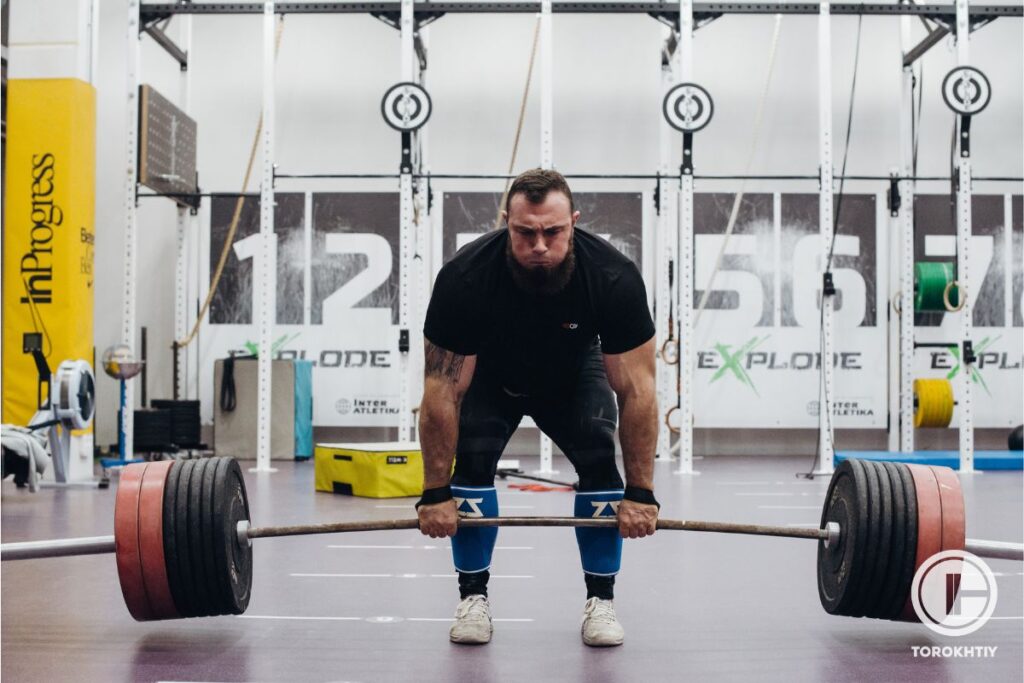
1. Training Methods: Intensity, Duration of Training, and Periodization
No matter what sports you represent, whether you’re a powerlifter vs strongman , you need a strong foundation that lies in a solid and comprehensive workout plan.
Speaking about training itself, the Strongman workout involves a combination of heavy lifting, event-specific training, and cardiovascular conditioning. Strongmen train to build overall strength and power, mastering the technique required for the competitions.
It is worth mentioning that strongman or powerlifter training can differ from bodybuilding because it primarily focuses on aesthetics and developing a symmetrical physique.
Powerlifters focus more on maximizing strength in the three powerlifting lifts: squat, bench press, and deadlift. The training plan revolves around progressively increasing weight and perfecting technique in each lift.
The difference between Strongman and bodybuilder is the following: strongman is a type of functional strength training that targets to develop overall strength and conditioning. It tests athletes’ abilities to lift, carry, and throw heavy objects.
The goal of a strongman workout is not just to build muscle size, but rather build strength, power, and stamina.
Bodybuilding is a training style that focuses on hypertrophy and muscle definition, prioritizing aesthetic muscular development via targeted weight lifting and resistance training.
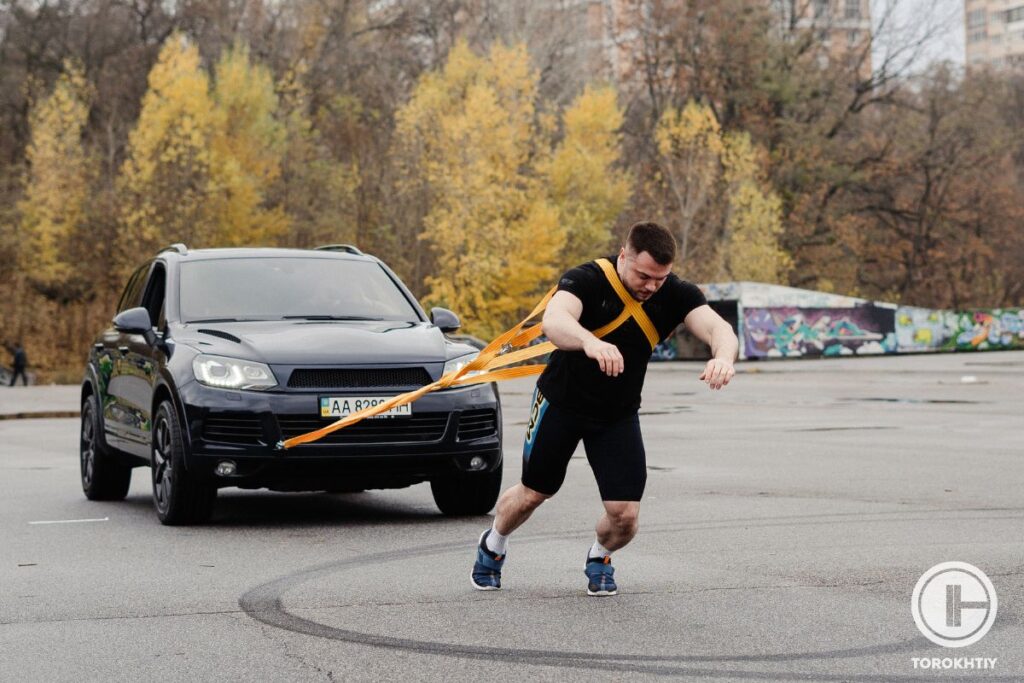
2. Exercise Variety and Monotony in Both Sports
The difference between a strongman and a powerlifter lies in the following aspects: both sports involve lifting heavy weights, however, there are key differences between them. Powerlifting training focuses on “The Big 3” movements: squat, bench press, and deadlift. So, on competition day, athletes perform only three lifts.
While, Strongman training includes a wide range of movements, e.g., lifting, pushing, carrying, and pulling heavy objects. It may sound like typical strength training, but carrying atlas stones or performing log presses may be quite intimidating and challenging.
3. Physical and Psychological Qualities Each Sport Develops
Despite that both disciplines are based on strength and power, Powerlifting requires minimum stamina to perform well at a competition, while Strongman requires a ton of endurance to perform all exercises.
A powerlifter has to lift a weight one time in order to make a successful lift and get points. On the contrary, a Strongman event involves performing an exercise for multiple or as many reps as possible for a set distance.
Powerlifting is a pure strength sport, meaning how much weight you can lift for one rep. Here you have 9 lifts in a competition with plenty of rest between. While there is no endurance requirement. At a time, needing to be pretty strong, Strongman has a high endurance requirement that needs to be developed.
Strongman competitions test athletes’ overall strength, showcasing their ability to handle challenging tasks. Athletes should possess strength, stamina, and mental fortitude to deal with those movements. On the contrary, powerlifting events are quite “boring”: they focus solely on the Big 3 movements we mentioned earlier.
Conclusion
Similar in training routine, Strongman vs Powerlifting are two different strength sports with various competitive events and weight classes, with powerlifting being more accessible for the average athlete than Strongman is.
Can’t decide which sports will meet your goals? Don’t miss the opportunity to ask our experts what matters to you most.
Also Read:
- 10 Strongest Women in the World: From the Origin Till Now
- Effective Strongman Training Program to Gain Max Strength
- Why are Strongman Fat: Organism Adaptations, Proper Diet & Training
- Strongman Vs Bodybuilding: Which Path to Choose?
- How To Become A Strongman: Requirements & Training Plan
- Strong Woman Competitions: History & Current State
References:
- Winwood Paul W; Keogh Justin WL; Harris Nigel K. “The Strength and Conditioning Practices of Strongman Competitors”, Journal of Strength and Conditioning Research, no.25(11) (2011): p. 3118-3128.
- McGill Stuart M; McDermott Art; Fenwick Chad MJ. “Comparison of Different Strongman Events: Trunk Muscle Activation and Lumbar Spine Motion, Load, and Stiffness”, Journal of Strength and Conditioning Research, no.23(4) (2021): p. 1148-1161.
- Paul W Winwood, John B Cronin, Logan R Posthumus. “Strongman vs. traditional resistance training effects on muscular function and performance”, Journal of Strength and Conditioning Research, No.29(2), (2015): p. 429-39.
- Ferland Pierre-Marc, Comtois Alain S. “Classic Powerlifting Performance: A Systematic Review”, Journal of Strength and Conditioning Research 33 (2019): p. 194-201.
- Benjamin R. Hindle, Anna Lorimer, Paul Winwood, Justin W. L. Keogh. “The Biomechanics and Applications of Strongman Exercises: a Systematic Review”, Sports Medicine-Open, no.5 (2019).
- Photos are made by Torokhtiy Media team.
Why Trust Us?
With over 20 years in Olympic weightlifting, strength training, nutrition coaching, and general fitness our team does its best to provide the audience with ultimate support and meet the needs and requirements of advanced athletes and professional lifters, as well as people who strive to open new opportunities and develop their physical capabilities with us.
By trusting the recommendations of our certified experts in coaching, nutrition, and sports training programming, as well as scientific consultants, and physiotherapists, we provide you with thorough, well-considered, and scientifically proven content. All the information given in the articles concerning workout programming, separate exercises, and athletic performance, in general, is based on verified data.
The product testing process is described in more detail here.
Author: Sergiy Osipchyk
Strongman Coach,
Former coach of Oleksiy Novikov and Pavlo Nakonechnyy
Strongman Experience: 10+ years
Sergiy has been involved in strength sports since he was 10 years old, and already started coaching when he was just 15 years old.
He helps clients of any age and experiences achieve results using an individual approach, daily process control, consultation and training knowledge and techniques, total experience is more than 20,000 individual training sessions.
Sergiy has trained a roster of renowned PRO strongman athletes including Oleksii Novikov, Pavlo Nakonechnyy and many other.



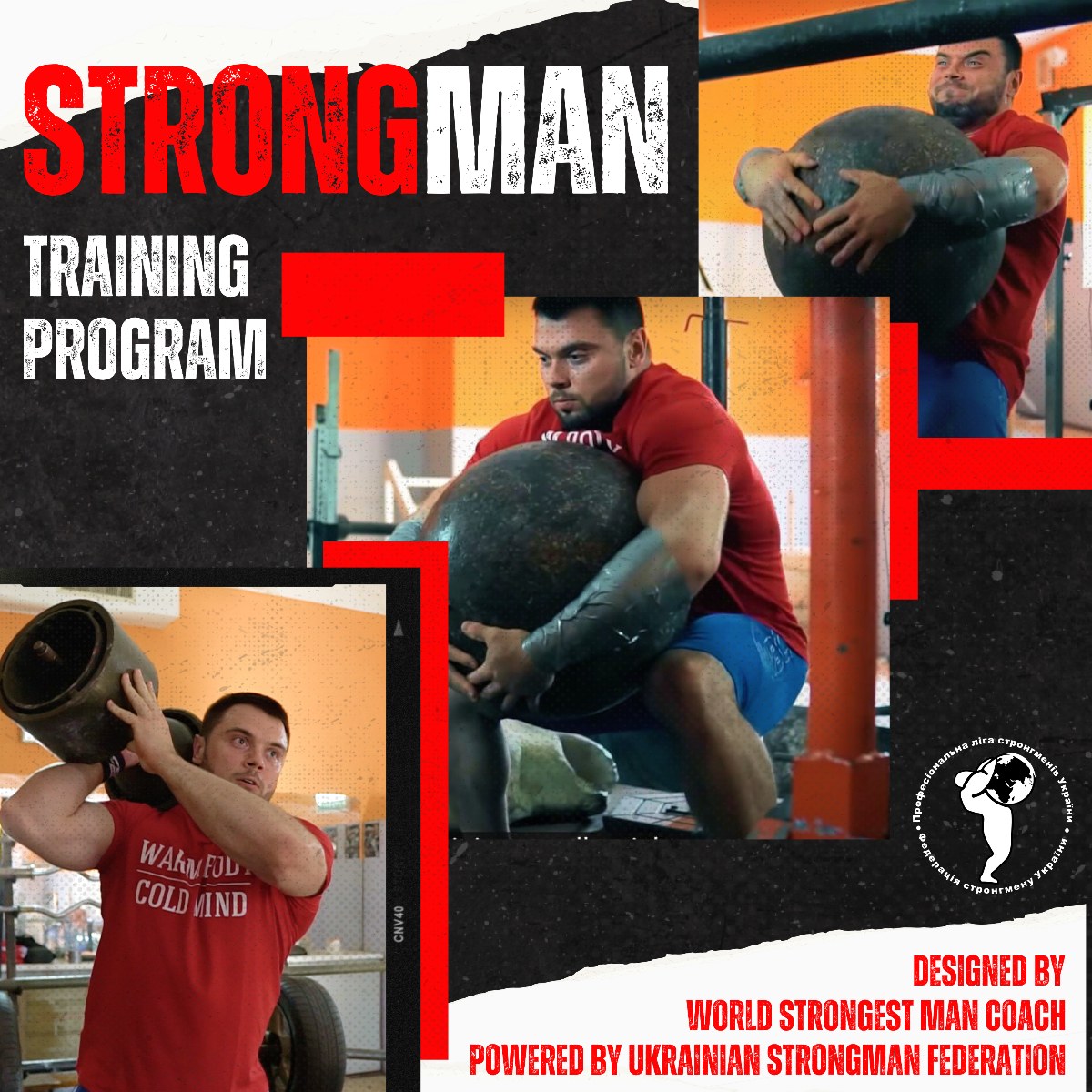
Still have questions after reading our article? Unlock your full potential by engaging with our experts and community! Don’t hesitate — leave a comment below and Sergiy Osipchyk will provide a personalized answer and insights to help you reach your goals.